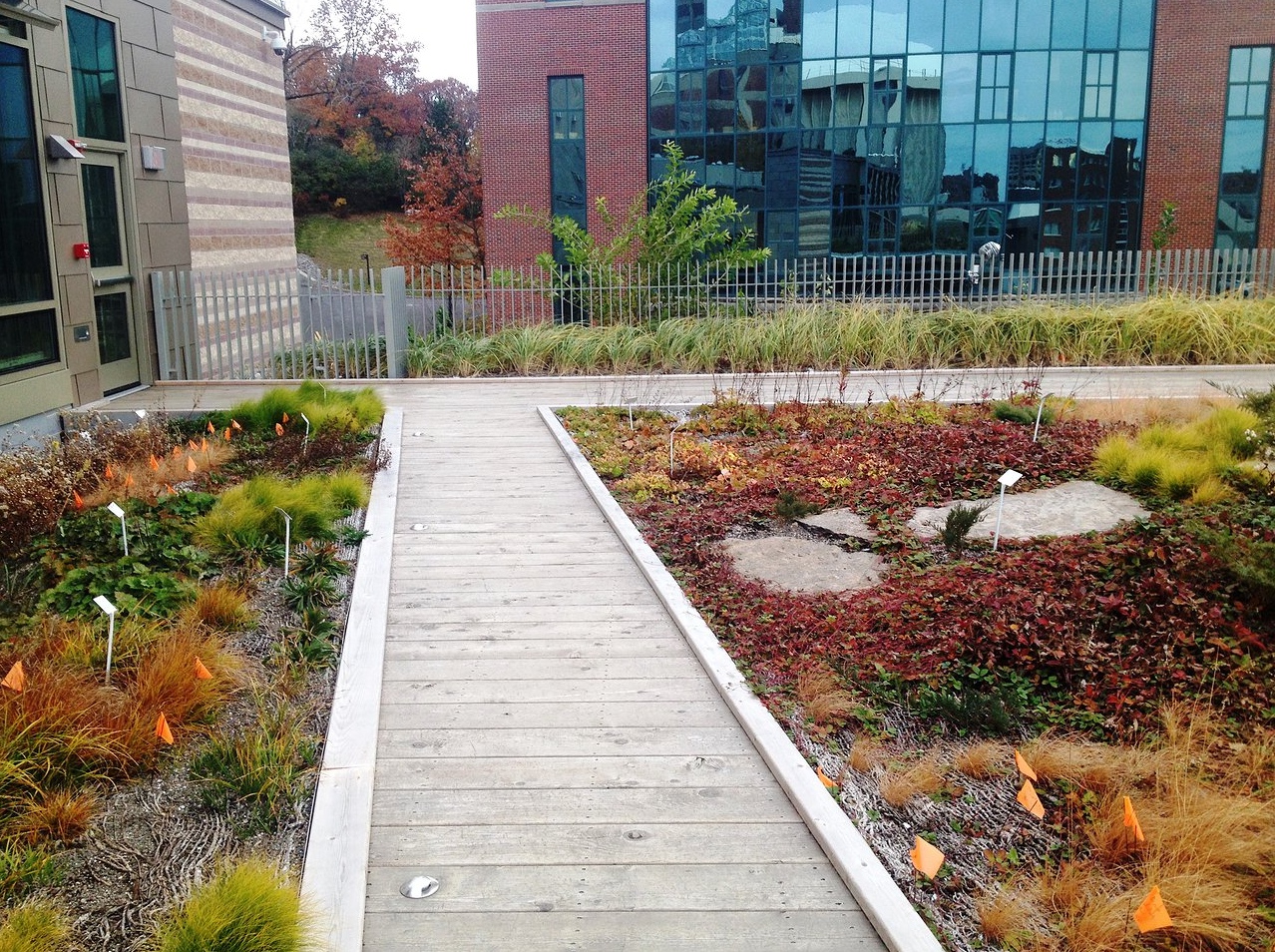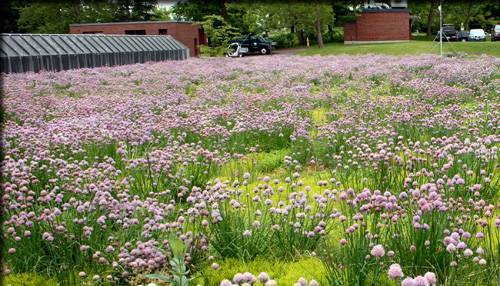Sustainability at ESF
Green Roofs
ESF's Syracuse campus features two green roofs. One is located on the Gateway Center and one on Walters Hall. Take our Virtual Sustainability Tour to explore sustainable campus features beyond green roofs.
Gateway Center
The Gateway Center's green roof is a symbol of ESF culture, demonstrating how the College implements what it teaches in its programs.
The 9,400-square foot green roof sits atop a LEED Platinum certified building and serves both research and demonstration purposes. Its unique design provides architects and ecologists knowledge about how marginal native plant communities can be used in place of sedum typically used in green roof installations. ESF professors Don Leopold and Tim Toland were instrumental in the roof's design and planning.
The green roof was inspired by native New York dune and barrens plant communities. Native plant species found on the green roof were sourced from the eastern Lake Ontario dunes and the northeastern Lake Ontario Alvar pavement barrens. Selected plants were chosen for their ability to endure extreme temperature, wind, and moisture. They were also sought for their lack of need for long term maintenance, as they can withstand drought and low soil fertility. Plant trials, involving student researchers, were conducted over three seasons to ensure that selected plants could withstand the unique conditions posed by the green roof.
The planting media is 6 to 18 inches deep, which supports larger woody plants, and provides additional insulation for the building.

Walters Hall
The Walters Hall green roof was installed in 2005, and was predominately planted with sedum. Sedum plants (or stonecrops) are a favorite green roof material because they are lightweight drought- and pest-resistant plants that do not require deep substrates. The planting media for the Walters Hall green roof is 6 to 12 inches deep, providing moderate insulation for the building. The Walters Hall green roof also features a weather station that measures air temperature, relative humidity, rainfall, wind speed, atmospheric pressure, net radiation, and the roof's soil temperature and moisture.
Green roofs provide many benefits including storm water runoff control, mitigation of urban heat-island effects, building energy conservation, and provides habitat for wildlife and pollinators.
A 15.48 kW photovoltaic (PV) array accompanies the green roof atop the building.

